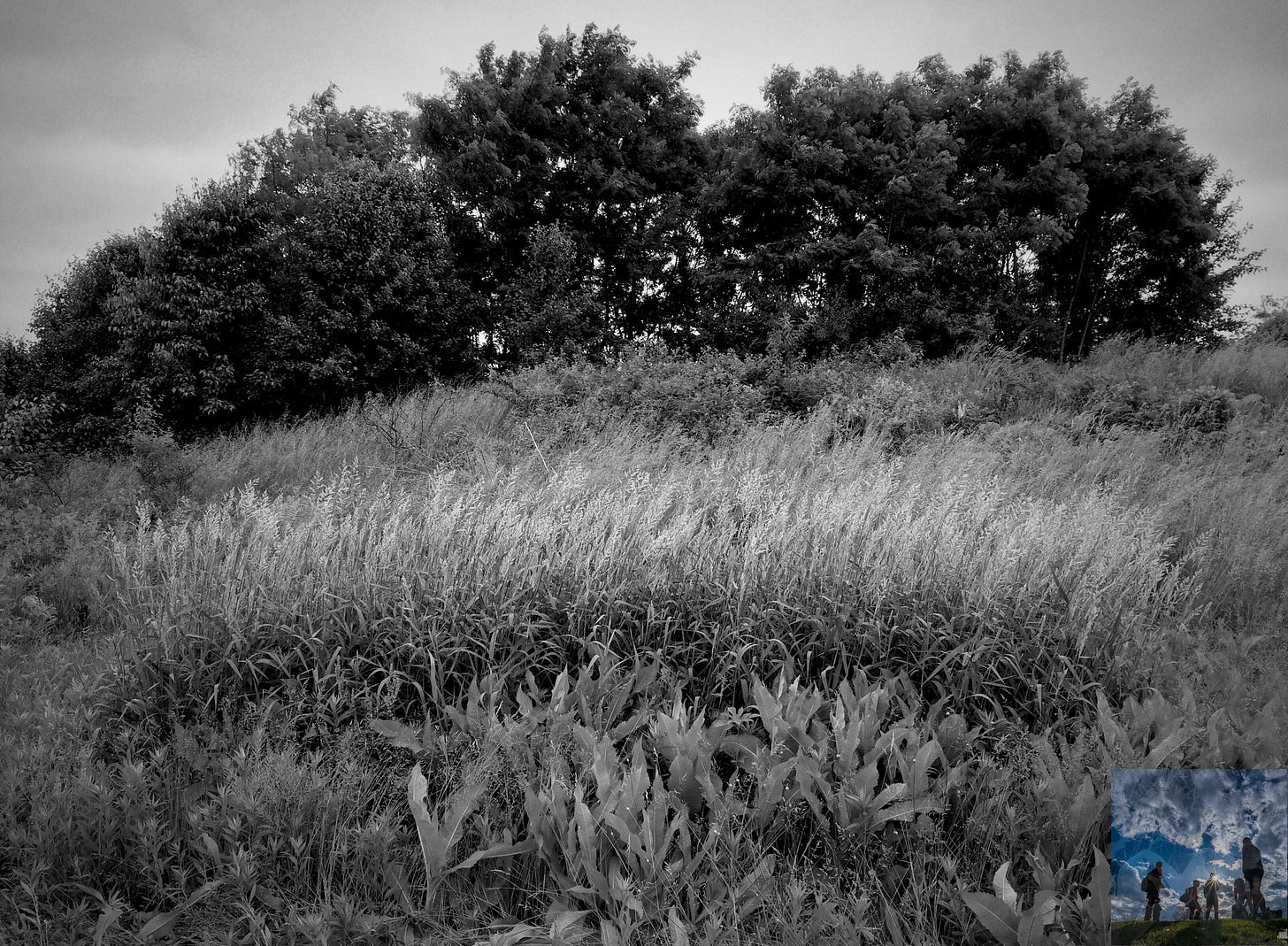Stillness in Layers: The Quiet Precision of a Monochrome Landscape
There’s a particular kind of silence that only black and white photography can capture—a silence not of absence, but of restraint. This image, a modest hillside overgrown with wild grasses and bracketed by a row of trees, says everything by holding back. There are no dramatic skies, no striking subject, no showy composition. And yet it holds your gaze.
The decision to strip the scene of color is the first and most deliberate technique. In doing so, the photograph lifts itself out of the everyday and into something closer to memory—or maybe myth. Without the distraction of green and brown and blue, form takes over. Texture, contrast, and rhythm become the new language. You see not “a field,” but a choreography of shapes.
Foreground vegetation breaks this rhythm slightly—broad, erratic leaves jut forward like dancers missing their mark. It’s not a flaw; it’s tension. It’s what makes the frame breathe.
This is where repetition and broken symmetry come into play. The grasses repeat vertically, almost hypnotically, like static noise across a screen. But nothing is mechanically uniform. There’s drift. There’s sag. Nature resists precision, and this resistance gives the image life. The line of trees in the background mimics a solid wall, but closer inspection shows it buckling and bending, branch by branch. Some trees reach skyward; others shrink behind them. No two silhouettes are alike.
There’s a layered structure here—bottom, middle, top—each horizontal band echoing the one before it, but softer, blurrier, more abstract as you rise. It’s a kind of visual decrescendo. The eye enters at the base and climbs naturally upward, like walking a slow incline without ever leaving the earth. The lack of strong shadows reinforces the gentleness of this movement. Everything here is soft: the light, the edges, the transitions.
You could call this image meditative, but that would miss the quiet tension woven into it. There’s a controlled wildness. Every element—every blade of grass, every flick of light—is allowed to exist on its own terms. The photo doesn’t organize nature; it listens to it.
This isn’t a landscape you conquer. It’s one you sit with.
PhotoCamp Daily is not a newsletter about the technical skills required to be a good photographer or become a photojournalist. There is a multitude of videos, self-help books, training courses, and classes, and then there is the power of social media as an instructional tool.
PhotCamp Daily is about learning to experience making good photos. About learning to better observe subjects and their relationship to story. Learning yourself to express better what will become a collective view of your world and the new experiences you will encounter.
PhotoCamp Daily is always free! But you can pledge support at any time.
Consider subscribing to The Westerville News and My Final Photo News. Also recommended is Into the Morning by Krista Steele.
My Final Photo News is a reader-supported publication. To receive new posts and support photography and commentary, consider becoming a free or paid subscriber.


